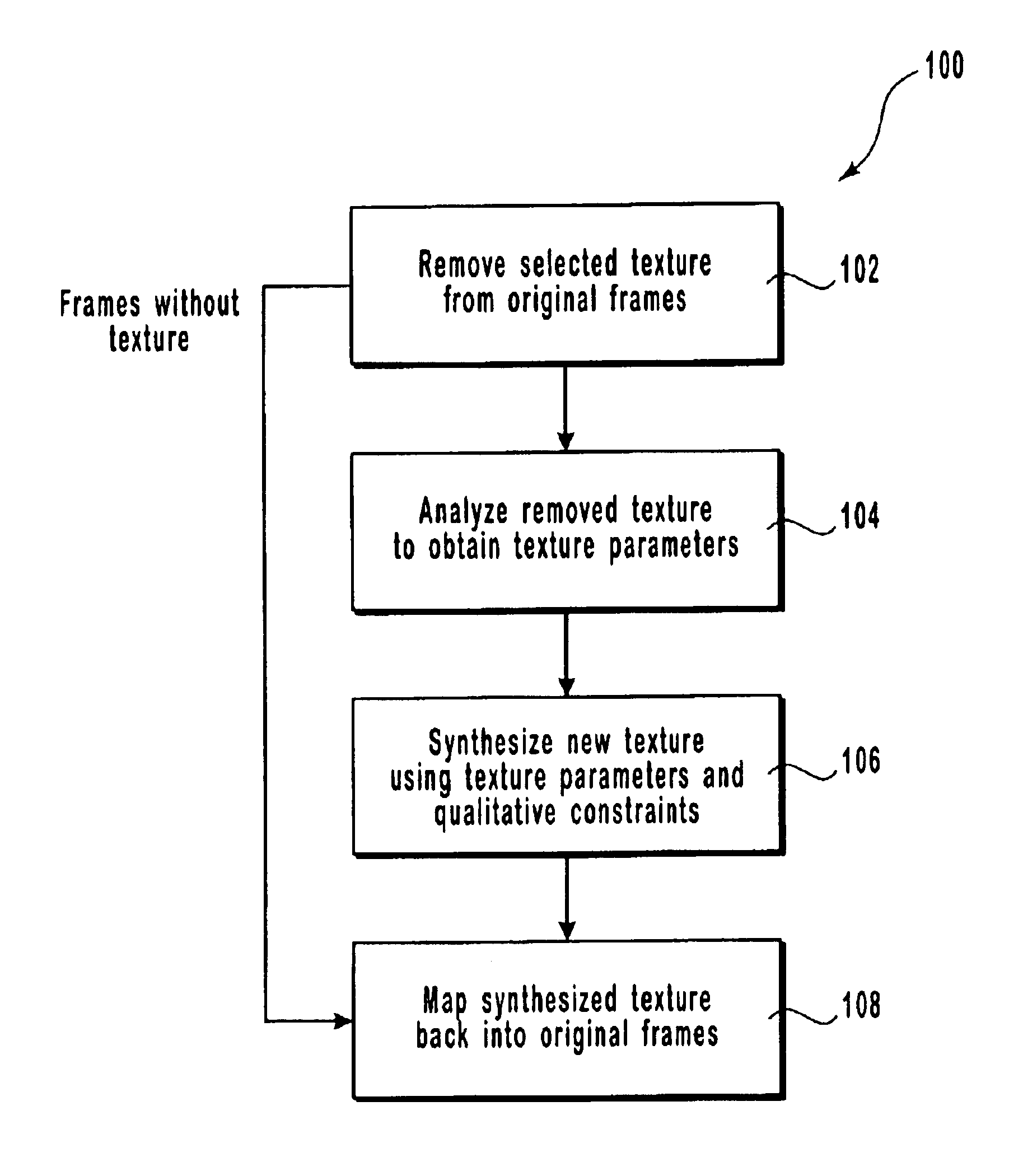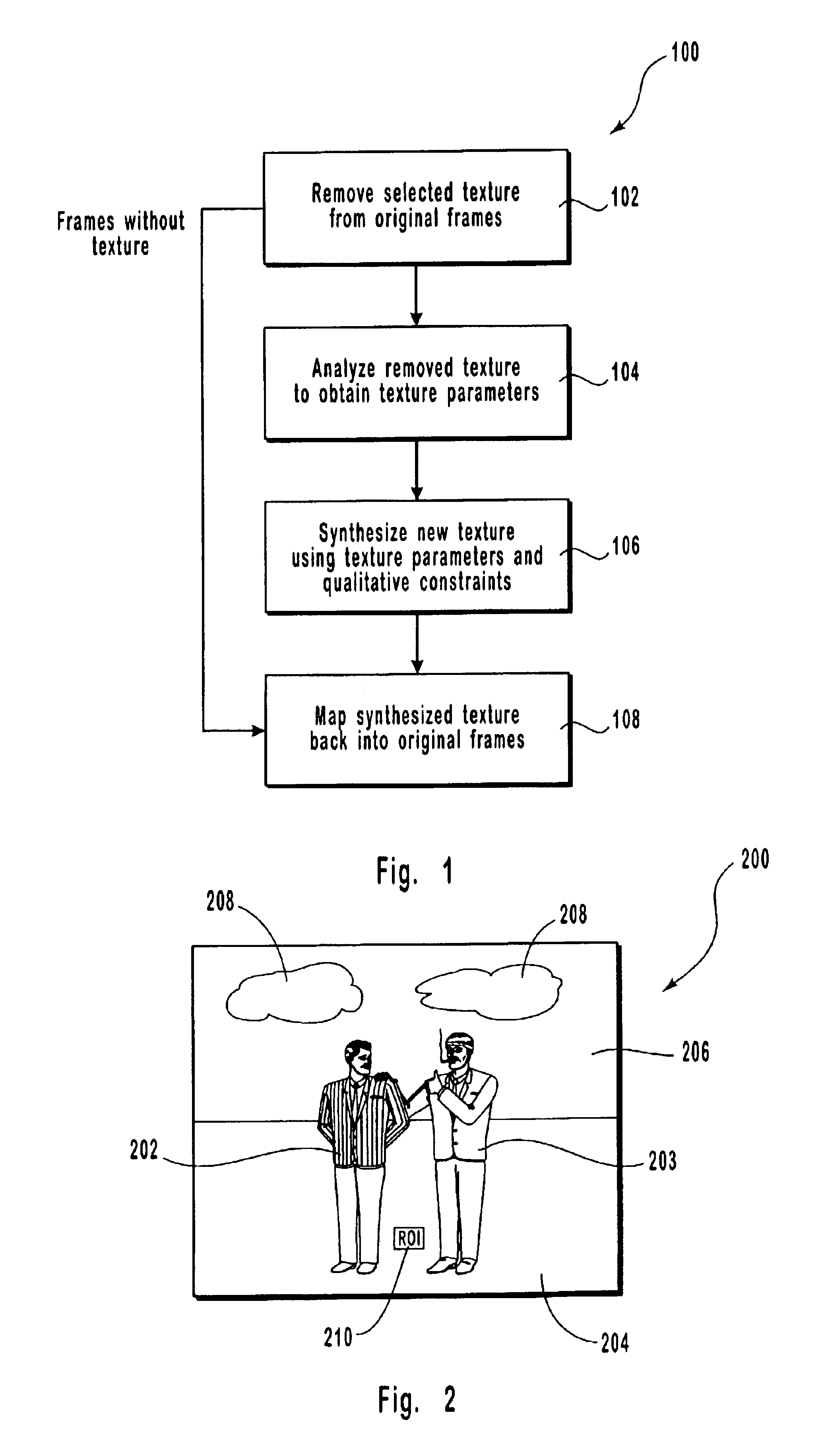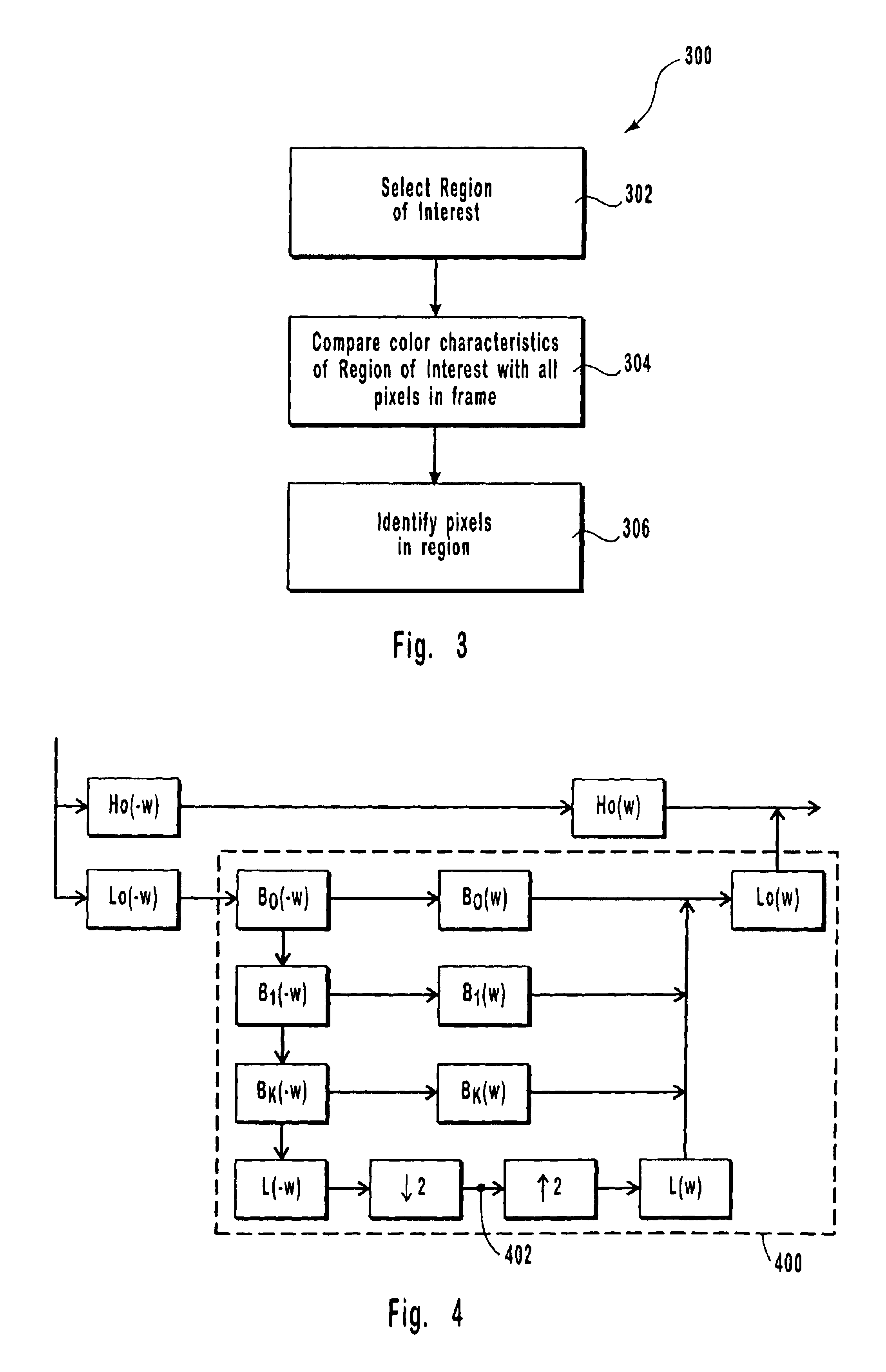Texture replacement in video sequences and images
a video sequence and texture technology, applied in the field of video sequence and image texture replacement, can solve the problems of difficult task, limited transmission distance, unacceptably low visual quality of these video sequences, etc., and achieve the effect of reducing the bit rate of a video sequence with synthesized textures
- Summary
- Abstract
- Description
- Claims
- Application Information
AI Technical Summary
Benefits of technology
Problems solved by technology
Method used
Image
Examples
Embodiment Construction
[0020]The present invention relates to systems and methods for texture replacement in video sequences and to reducing bit rates of video sequences through texture replacement. The bit rate of a compressed video sequence is reduced because the synthesized texture can be more effectively compressed than the original texture. Because the texture replacement occurs as part of the encoding process, the computational costs of the decoder are not increased and the processing / synthesizing capabilities of the decoder are not assumed.
[0021]FIG. 1 is a flow diagram that illustrates one embodiment of a method for replacing texture in a video sequence and for reducing the bit rate of the encoded video sequence. Reducing the bit rate of a video sequence begins by removing selected texture from a frame or from a series of frames included in the video sequence (102). Typically, texture from a single frame is identified, while the identified texture from that particular frame is removed from a set o...
PUM
 Login to View More
Login to View More Abstract
Description
Claims
Application Information
 Login to View More
Login to View More - R&D
- Intellectual Property
- Life Sciences
- Materials
- Tech Scout
- Unparalleled Data Quality
- Higher Quality Content
- 60% Fewer Hallucinations
Browse by: Latest US Patents, China's latest patents, Technical Efficacy Thesaurus, Application Domain, Technology Topic, Popular Technical Reports.
© 2025 PatSnap. All rights reserved.Legal|Privacy policy|Modern Slavery Act Transparency Statement|Sitemap|About US| Contact US: help@patsnap.com



